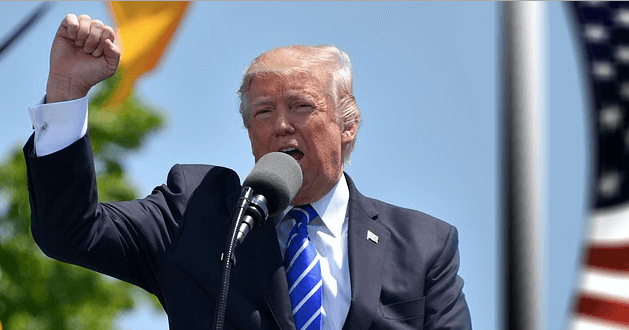Featured
It’s time to be concerned about bridge safety
Structurally deficient bridges in the U.S. pose a great threat to public safety. How will Trump’s $1 trillion plan address this?

There are more than 54,000 structurally deficient bridges in the U.S. That designation does not mean the bridges are in imminent danger of collapsing, but it does mean that they need immediate attention. That fact becomes more alarming when one realizes that every day more than 174 million motorists drive over the nation’s structurally deficient bridges. And, there are no plans for repairing the majority of them because of a lack of funding.
Another way to consider the magnitude of the problem is to consider this additional statistic — more than 226,000 U.S. bridges, including one in every three Interstate highway bridges — have also been identified as in need of repairs. Without attention sometime soon, these bridges will also eventually become structurally deficient. The problem and the cost of repairs are escalating every week.
Pennsylvania, however, did take notice of its bridge problems. The state became known for its visionary approach to solving this problem when it entered into a public-private partnership to replace more than 550 structurally deficient bridges across the Commonwealth. The project reached a major milestone at the close of 2017 when the 350th bridge replacement was completed. Pennsylvania’s leaders, to their credit, did not wait for help from Congress.
However, many other state and local government leaders still hold out hope that Congress will soon allocate funding that will allow them to address critical infrastructure issues. Unfortunately, that’s not going to happen.
Even though details of the Trump administration’s proposed national infrastructure plan are still in limbo, those who have been paying attention know what to expect on Monday when President Trump lays out his infrastructure plan. The plan will not include huge amounts of federal funding. The nation’s debt is too high, there are too many other critical funding needs, and there is no consensus about where to find even a significant portion of the needed revenue.

During Trump’s presidential campaign, he stated a $1 trillion plan which involves infrastructural development. (Source)
The President repeatedly stated during his campaign that he would lay out a $1 trillion plan that would call for an investment of $200 billion (over the next decade) with a goal of leveraging another $800 billion or more from state and local funding or from the private sector. From comments made by individuals working on the plan and from leaked documents, it appears obvious that the plan will, however, pass most future funding responsibility for infrastructure projects to state and local transportation leaders. They will be expected to collaborate with local governments and private investors to raise a majority of the required revenue for regional infrastructure needs. The most recent and conservative estimate of what will be required is $123 billion.
While Iowa and Pennsylvania have the most structurally deficient bridges, Nevada and Delaware are among states with the fewest bridges in need of repair. But in spite of fewer bridges with structural problems, Nevada officials say that the state will still need $605.8 million for repairs. Similarly, Delaware estimates that $632.7 million will be needed for its bridge repairs.
One of the nation’s largest states, Texas, with more bridges than any other state, is also among the states with the least number of structurally declining bridges. There are 53,869 bridges in Texas, and only 847 are structurally deficient. State transportation officials say, however, that about 12,000 bridges need repairs, and it will take about $8.1 billion to fund the much-needed work. In California, officials say 4,366 bridges need repairs at a cost that is estimated to be $12.2 billion.
Already facing significant budgetary shortfalls, state and local officials are searching for alternative funding solutions for infrastructure projects. They have lobbied hard for increased federal funding as a basic component of a national infrastructure plan. But, few believe their efforts will result in significant funding help from Congress.
With the safety of American motorists and the health and growth of the nation’s economy at stake, it will be interesting to see the details of the President’s infrastructure plan next week. And, it will be stressful, to say the least, to wait and see what Congress does with the plan.
—
DISCLAIMER: This article expresses my own ideas and opinions. Any information I have shared are from sources that I believe to be reliable and accurate. I did not receive any financial compensation in writing this post, nor do I own any shares in any company I’ve mentioned. I encourage any reader to do their own diligent research first before making any investment decisions.

-

 Crypto2 days ago
Crypto2 days agoEthereum Momentum Builds as Bitcoin Rallies and Trilemma Claims Emerge
-

 Crowdfunding1 week ago
Crowdfunding1 week agoCrowdfunding Grants Open for Business Projects Until January 2026
-

 Biotech1 day ago
Biotech1 day agoHaptena Therapeutics Launches with €3 Million Funding to Target KRAS-Mutated Tumors
-

 Crypto1 week ago
Crypto1 week agoBitcoin in 2025: Mainstream Momentum, Price Weakness, and a Pivotal Year Ahead


























You must be logged in to post a comment Login